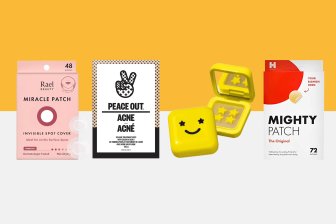The coveted look for vacationers this summer is sleek and chic – with an emphasis on sleek.

Many travellers, especially air travellers, are aiming to get up and go with as few accouterments as they can without sacrificing style.
People are thinking about packing light at all stages of the travelling process: from what suitcases they’ll use to the souvenirs they’ll buy.
Stylist Amanda Ross, fashion director for travel-themed Departures magazine, says she thinks about packing when she’s doing her initial shopping. “It really comes down to how you shop and what your wardrobe is about.”
But even more basic is the bag it will go in.
There are more FedEx boxes of clothes and accessories coming into the lobby of Manhattan’s upscale Mondrian SoHo than one might imagine – and fewer luxury-brand suitcases that would complement the handbags that its typical fashion-savvy guests carry, says hotel General Manager Gary Thomas.
He personally uses that send-ahead system. “You don’t have to carry anything then or worry about an extra pound or two, and it’s even more reliable than taking it with you.”
There are also fewer last-minute items, the ones you rarely “need,” tossed in, he says.
“The weight issue has become huge, especially in the past year,” agrees Dan Tarala, vice-president of product design and strategy for Victorinox Travel Gear. “It’s the No. 1 thing we hear.”
The complaints started in Europe, he says, but have moved west and east, north and south. When he started with Victorinox almost 10 years ago, the goal was to get a suitcase that could be used for two weeks down to 17 pounds; now it’s 5 pounds.
Of course, consumers want to shed weight without losing any of the features they have come to like or looks they want to wear.
In the world of suitcases, that means wheels still rule. They’ve just changed to smaller, more nimble ones, says Tarala. The evolving trend toward four wheels instead of two might seem counterintuitive, but they can be smaller and better distribute weight. They also encourage a lower profile of the bag, which results in more efficient use of the space inside.
Hard-side suitcases made of polycarbonate, as opposed to soft leather or nylon bags, are gaining wider acceptance, Tarala says. The hard bags need less framing inside. They offer durability comparable to nylon, and the modern design can rival the luxury of leather.
“The shift is not just looking at the main body material,” Tarala says. “We are looking at the overall frame: switching to honeycombs and laminated foam instead of solid pieces, less dense nylons versus metal for hardware and connection points. We don’t want to take anything away from the customer.”
He recommends using a 50-50 split case – the middle divider is the difference between everything inside the bag shifting “all over the place,” Tarala says – and starting packing by filling the voids near the handles and the wheel casings.
Ross puts the heaviest item in first: her shoes. She tries to restrict herself to one pair of flat daytime shoes and a dressier pair of evening heels. They have to go with everything, she says, but she won’t skimp with shoes that are flimsy, even if they are lighter. That would be penny-wise and pound-foolish.
Could you get away with only black shoes? Only brown? By starting off thinking that way, you’ll end up organizing your outfits ahead of time, which minimizes extra last-minute stuff, Ross says.
Whether it’s business or leisure travel, Ross wears a lot of dresses on the road. “They’re the least amount of work, the least amount of thought – and the most multipurpose. You can change from a flat to heel and wear the same thing all day.”
She’s particularly fond of seasonless jersey dresses that don’t wrinkle, even if rolled up tight. And, Ross says, there’s definitely no hangers in her bag. “Even if I’m going to an ‘event,’ it could be cocktail to black-tie, I pack my dress in a plastic dry-cleaner bag, folded in half.”
Ross also relies on cashmere cardigans and wraps, which are still needed in summer. They will fold up flatter than you expect, she says.
Jewelry is the one thing she brings knowing that it adds heft to her bag, but it adds even more style. It goes in her carry-on, shopper-style bag with her computer, phone and notebook. Ross says she treats that bag as a mobile office, leaving most personal clutter out of it. She will tuck inside a clutch handbag if a more formal occasion is on the itinerary, and if the trip involves sightseeing, a small day bag with a chain strap.
She leaves her blow-dryer at home. “If a hotel doesn’t have it, I won’t blow-dry my hair, but that almost never happens,” Ross says.
Mondrian’s Thomas says she’s safe leaving it – and a lot of other things – behind. He has traded a nice leather dopp kit for a few key things (his toothbrush, for one) in a plastic bag.
Hotels expect to provide many grooming products, especially with the liquid limits on airplanes, and many hotels, even – and maybe especially – those in remote locations have retail stores.
Thomas suspects some people are “strategically underpacking” so they’ll have an excuse to shop. Buying an umbrella, sweater or rain jacket is probably a smarter souvenir than a tchotchke, he says.
Still, he packs his hair gel. He’s not willing to chance that. “It’s very specific.”




Comments